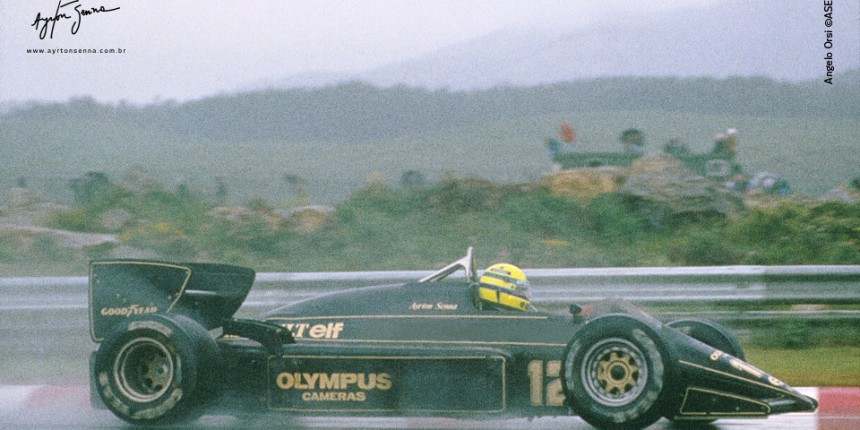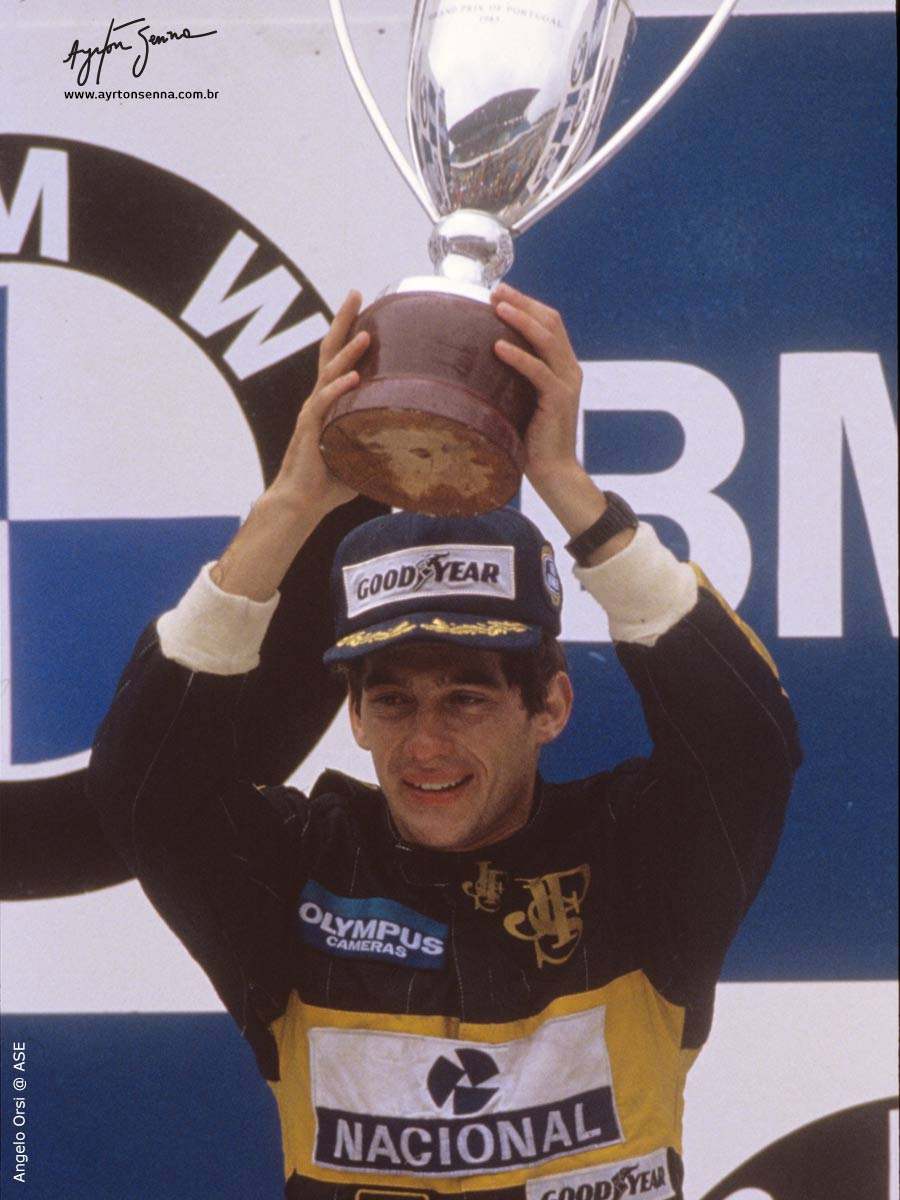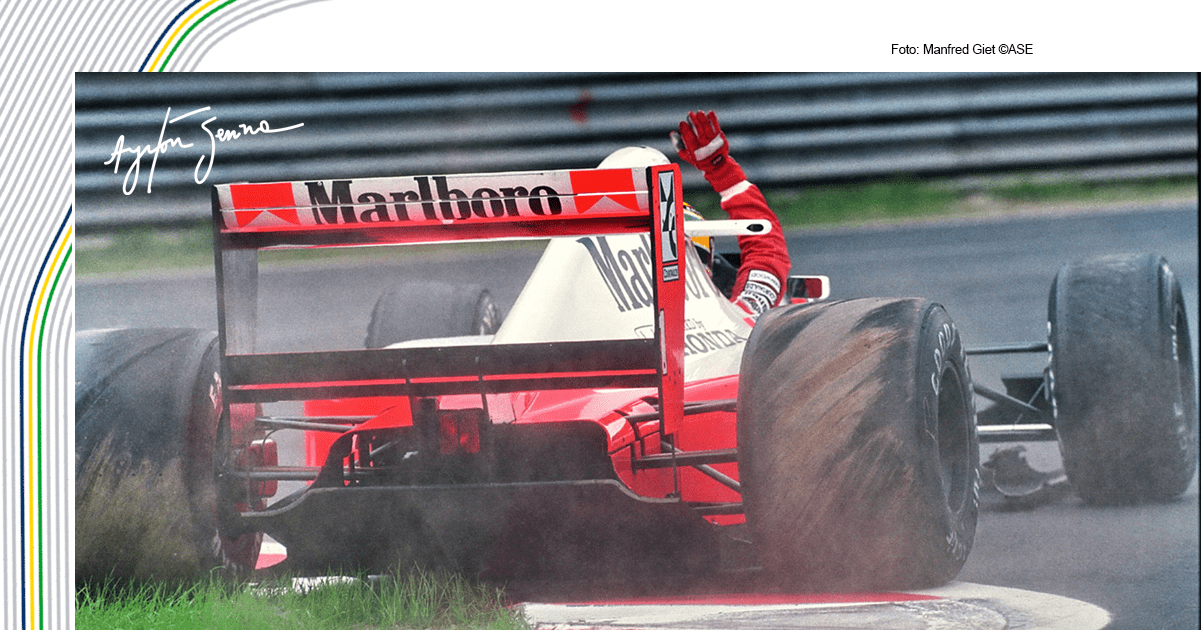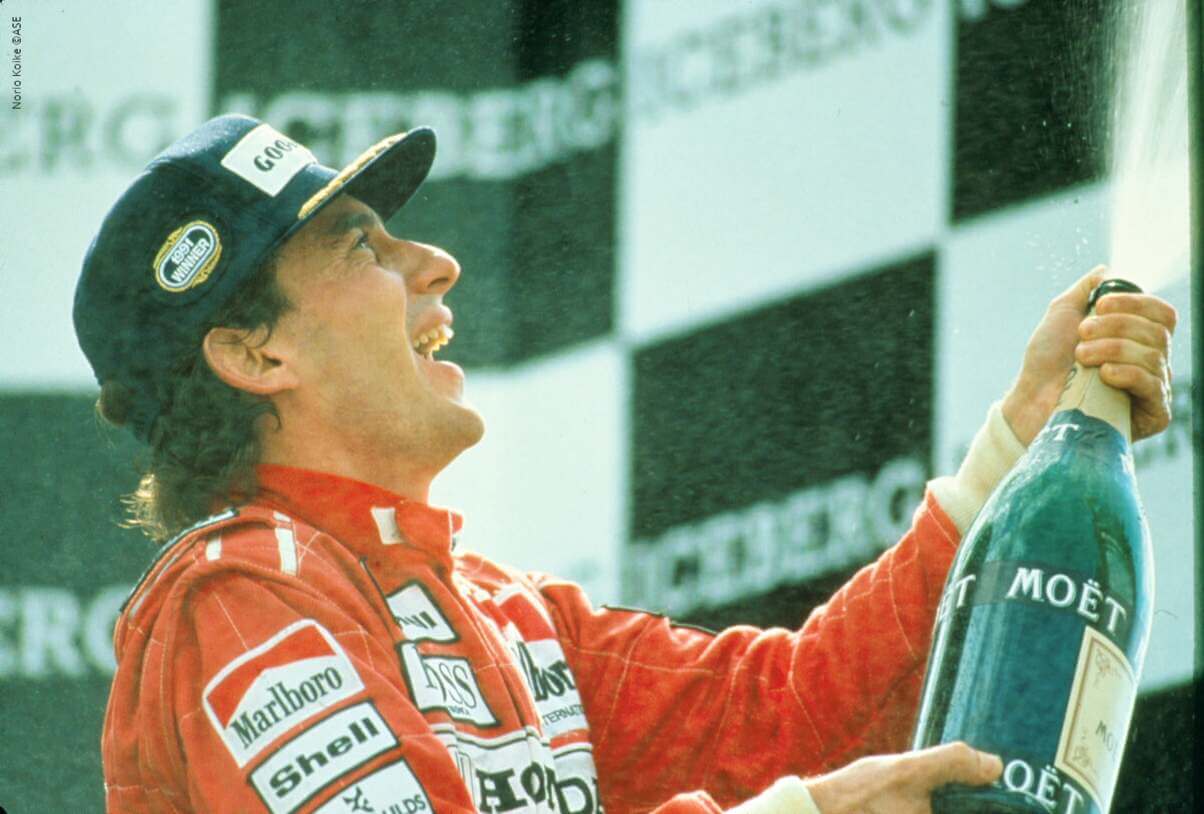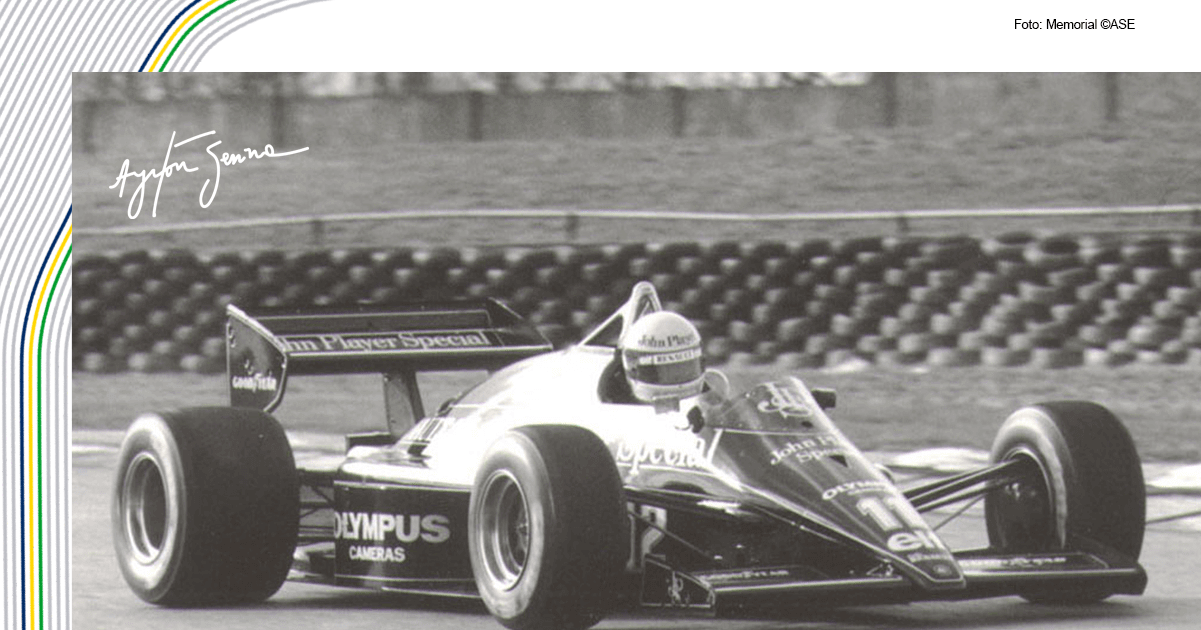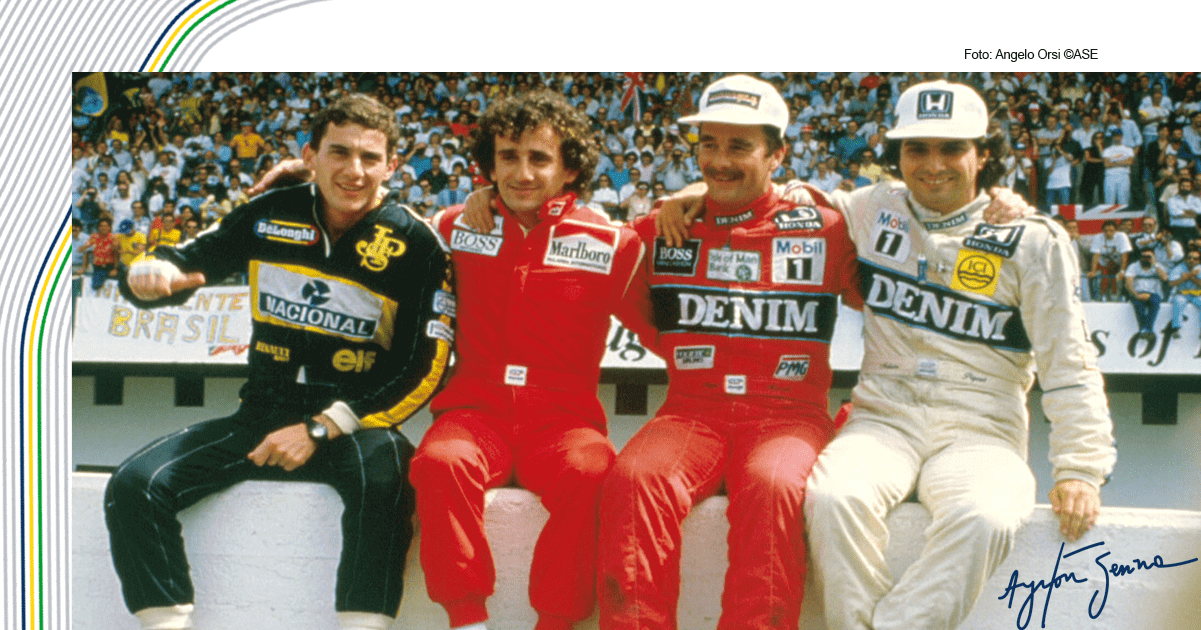This Tuesday, we celebrate an unforgettable victory for Brazil in Formula One. On April 21, 1985, a young Ayrton Senna made history with his Lotus. In his second year as an F1 driver, the Brazilian secured the first of his 41 wins, with an impressive triumph under a downpour at Estoril, in Portugal.
After his Lotus debut at the Brazilian Grand Prix, in Jacarepaguá, it was at Estoril that Senna took is first pole-position ever in F1 – posting a time almost half a second quicker than Alain Prost, who was the overall runner-up in 1984. With his Lotus 97T, Senna completed his best lap in 1min21s007.
After the green light, Ayrton Senna didn’t give anyone a chance, and led from start to finish, widening the gap from the beginning and also posting the quickest lap. He almost lapped the second-place finisher – literally.
After all, Italian Michele Alboreto’s Ferrari crossed the finish line exactly one minute and two seconds after Senna – an eternity, when it comes to F-1 racing. Third-place finisher, Renault’s Patrick Tambay, was lapped. And the rest of the field, starting with fifth-place finisher, Briton Nigel Mansell, driving a Williams, ended the race at least two laps behind the Brazilian driver.
“I lost count of how many times I almost crashed. The track conditions were really dangerous. Ten times worse than last year [in Monaco]. Today is a very happy day for me. I was lucky enough to keep the car going straight”, said Ayrton Senna in an interview to Folha de S. Paulo on April 21, 1985, after the race.
Under a thunderstorm that made 13 of the 26 drivers spin out in spectacular fashion, the Brazilian driver’s amazing performance led British magazine Motoring News to write: “Senna glided, navigating like an experienced helmsman over a track full of traps, while veteran drivers aquaplaned and shipwrecked.”
After 1984’s spectacle in Monaco, the Portuguese Grand Prix finally established the myth of Ayrton Senna in the rain: F1‘s best driver ever on a wet track.
As a result, Senna went up to nine points overall, tying with McLaren’s Alain Prost for second place. Ferrari’s Michele Alboreto led the championship, with 12. It was also Lotus’ first win in three years.
Their last triumph had been at the 1982 Austrian Grand Prix (with Italian driver Elio de Angelis), and their penultimate, in 1978 (with American driver Mario Andretti), which made clear that Senna was the main factor behind the traditional team’s return to the top of the podium over the course of the next three years (1985 to 1987).
